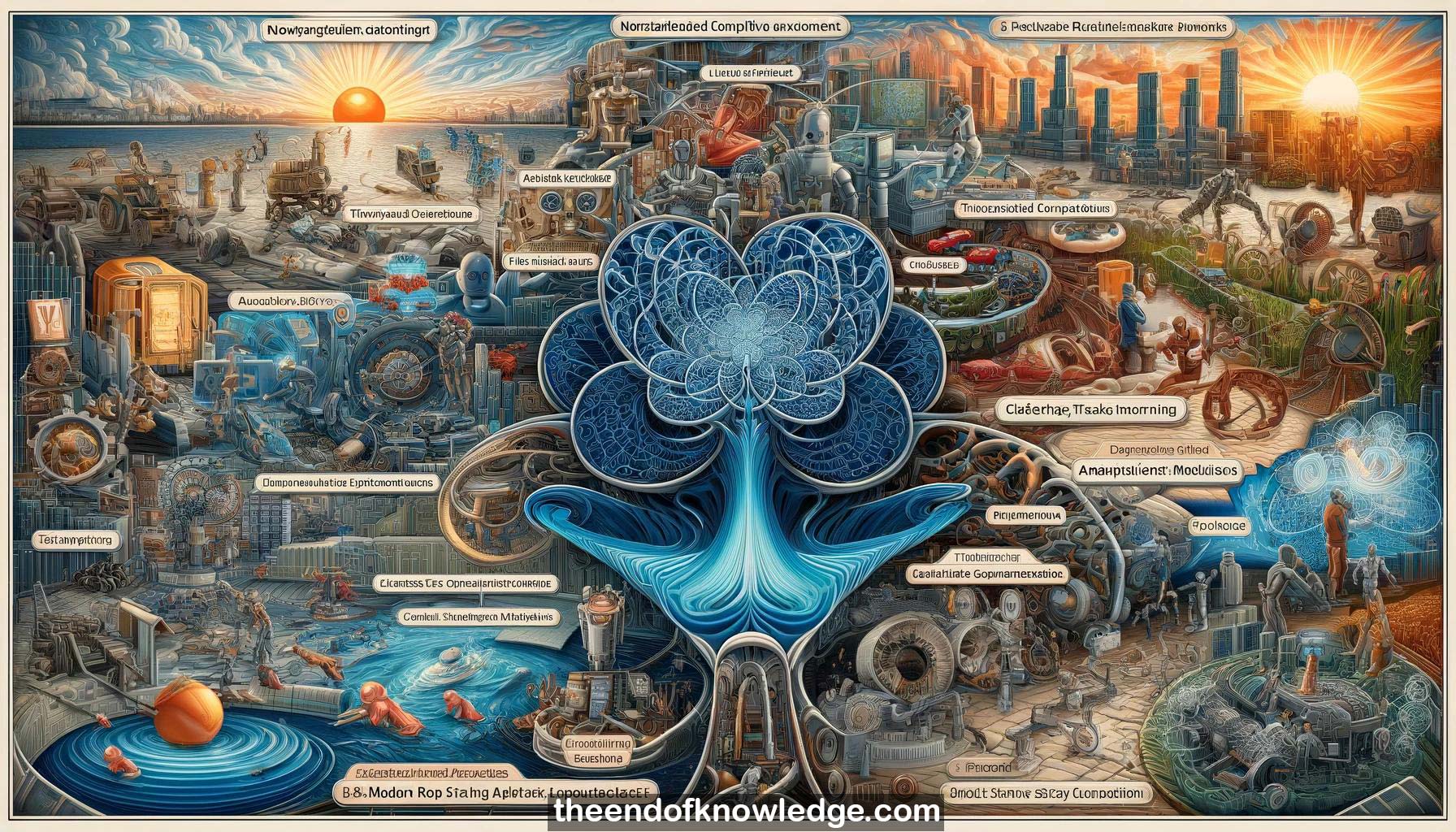 >
>
Concept Graph & Resume using Claude 3 Opus | Chat GPT4 | Gemini Adv | Llama 3:
Resume:
1.-The paper presents a gradient-based meta-learning algorithm for continuous adaptation in nonstationary and competitive environments.
2.-The ability to continuously learn and adapt from limited experience in nonstationary environments is seen as a milestone towards general intelligence.
3.-Real-world environments are often nonstationary due to complexity, changing dynamics or objectives over time, or the presence of other learning agents.
4.-Classical approaches to nonstationarity like context detection and tracking become impractical with modern deep RL methods that require many samples.
5.-The paper proposes tackling nonstationary environments as a multi-task learning problem using learning-to-learn or meta-learning approaches.
6.-The gradient-based meta-learning algorithm enables RL agents to learn to anticipate changes in the environment and update their policies accordingly.
7.-Multi-agent environments are particularly challenging and interesting due to the emergent complexity arising from agents learning and changing concurrently.
8.-The paper introduces RoboSumo, a new 3D physics-based environment where robot agents can compete against each other.
9.-Iterated adaptation games are proposed for testing continuous adaptation - agents repeatedly compete while being allowed to update their policies between rounds.
10.-The competitive setting makes the environment both nonstationary and adversarial, providing a natural curriculum and encouraging robust strategies.
11.-Meta-learning enables significantly more efficient adaptation than reactive baselines in the few-shot regime in both single- and multi-agent settings.
12.-Experiments suggest that agents using meta-learned adaptation strategies tend to be the fittest in a population that learns and competes.
13.-Learning under nonstationary conditions is challenging as changes in the environment allow only limited interaction before each change.
14.-The meta-learning approach casts nonstationarity as a sequence of stationary tasks and optimizes for a rule to update policies as tasks change.
15.-While many aspects like agent physiology can induce nonstationarity, environments with multiple learning agents are especially challenging and interesting.
16.-From an individual agent's perspective, multi-agent environments are nonstationary as other agents are simultaneously learning and changing their behaviors.
17.-RoboSumo allows iterated games where a pair of agents compete in successive rounds while adapting to each other's changing strategies.
18.-The meta-learning agents are compared to baselines including no adaptation, implicit adaptation via RL2, and adaptation via tracking.
19.-On nonstationary locomotion tasks, the meta-learned policies outperform other methods in terms of continuous improvement over successive environment changes.
20.-In RoboSumo, the meta-learned strategies show superior performance than baselines when adapting to an opponent that gets increasingly skilled over rounds.
21.-Experiments illuminate how much experience is needed for different adaptation methods to successfully adapt to the changes.
22.-With a population of diverse agents, those using meta-learned strategies ranked the highest based on TrueSkill scores from iterated competitions.
23.-Over successive generations of evolution of the population based on adaptation performance, meta-learners came to dominate the pool.
24.-Meta-learning rules are optimized at training time via backpropagation through the policy update steps to maximize performance after adaptation.
25.-Importance weight correction is used to make the meta-update unbiased when adapting at execution time with off-policy data.
26.-Simultaneous training on diverse tasks (nonstationary locomotion scenarios or different opponents) allows meta-learning of generalizable adaptation rules.
27.-Limitations include sensitive assumptions about task structure, computational expense of higher-order gradients, and potential instability under drastic shifts between tasks.
28.-Key aspects enabling this approach are consistent task structure between training and testing, and ability to interact to gather data for adaptation.
29.-The framework is general in that different notions of task structure can be considered by modifying the meta-learning update rule.
30.-The approach provides a principled framework for optimizing adaptation, offering a path to creating more flexible and robust learners.
Knowledge Vault built byDavid Vivancos 2024